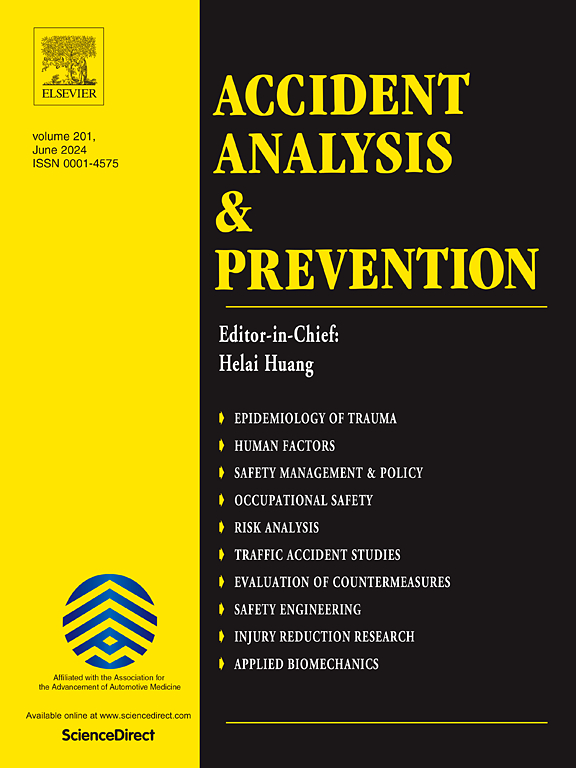地铁站动态决策:楼梯/自动扶梯选择新模型及其对事故预防的影响
IF 6.2
1区 工程技术
Q1 ERGONOMICS
引用次数: 0
摘要
地铁站频繁发生与自动扶梯有关的事故,促使当局提倡使用公共楼梯。然而,在日常生活中,行人本能地倾向于乘坐自动扶梯,而不是走楼梯。如何更好地诱导行人选择楼梯?有必要揭示行人选择的内在机制。本文提出了一种车站内各种设施分层选择的动态行人流分配模型。设施的路径选择是战术层面的,步行方向的路径选择是操作层面的。以北京市为例,对模型进行了验证。研究表明,扶梯和楼梯长度、扶梯速度和行人分布对行人的选择行为有显著影响。又长又快的自动扶梯吸引了更多的行人,导致入口处严重拥挤。因此,为了安全起见,建议对扶梯进行分段。这项研究可以帮助预防事故和管理繁忙的地铁站人群。本文章由计算机程序翻译,如有差异,请以英文原文为准。

Dynamic decision-making in subway stations: A new model for stair/escalator choice and its impact on accident prevention
Frequent escalator-related incidents in subway stations have prompted the authorities to promote the use of public stairs. In daily life, however, pedestrians instinctively prefer to take escalators rather than use stairs. How to better induce pedestrians to choose stairs? It is necessary to reveal the internal mechanism of pedestrian choice. In this paper, we propose a dynamic model of pedestrian flow assignment with hierarchical choices of various facilities in the station. The route choices of facilities are at the tactical level while the path choices of walking directions are at the operational level. A case study in Beijing is conducted to verify the model. It is shown that the lengths of escalators and stairs, escalator speed, and the pedestrian distribution have significant influences on pedestrians’ choice behavior. Long and fast escalators attract more pedestrians and lead to severe crowding at the entrance. Thus, escalator segmentation is suggested for safety. This study can help prevent accidents and manage crowds in busy subway stations.
求助全文
通过发布文献求助,成功后即可免费获取论文全文。
去求助
来源期刊

Accident; analysis and prevention
Multiple-
CiteScore
11.90
自引率
16.90%
发文量
264
审稿时长
48 days
期刊介绍:
Accident Analysis & Prevention provides wide coverage of the general areas relating to accidental injury and damage, including the pre-injury and immediate post-injury phases. Published papers deal with medical, legal, economic, educational, behavioral, theoretical or empirical aspects of transportation accidents, as well as with accidents at other sites. Selected topics within the scope of the Journal may include: studies of human, environmental and vehicular factors influencing the occurrence, type and severity of accidents and injury; the design, implementation and evaluation of countermeasures; biomechanics of impact and human tolerance limits to injury; modelling and statistical analysis of accident data; policy, planning and decision-making in safety.
 求助内容:
求助内容: 应助结果提醒方式:
应助结果提醒方式:


